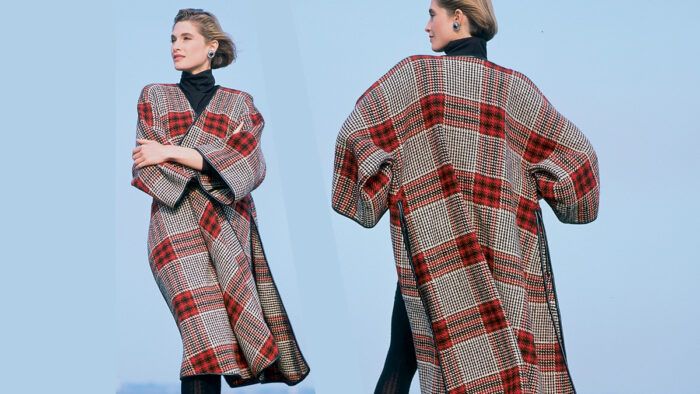Designed for Living, Not for Fashion
American designer Bonnie Cashin defined the '60s' functional minimalism
How many modern designers are there whose garments you could positively identify, at a glance, without first seeing the label? I’d have to say “Not many,” and I’m a costume historian. Among American designers, however, there’s one whose clothing is undeniably and irrefutably recognizable. Bonnie Cashin carved her name in fashion history with one truly innovative and incredibly focused collection after another, from 1952 to well into the 1970s.
Bonnie Cashin’s signature style is responsible for so many contemporary design concepts it’s hard to tally them. Perhaps her most enduring contribution is the idea of “layering” clothing to produce a combination of style and comfort. But she also brought to fashion hardware closures, leather bindings, the poncho, the parabola cut, the Noh coat, the bubble coat, canvas outerwear, and the combination of hand-loomed English and Irish wools with leather, jersey, and cashmere. At the same time her construction methods were classic examples of elegant simplicity, easily within the reach of any careful sewer. I’ll examine the cut and construction of some characteristic Cashin garments and accessories from the collection at Mount Mary College in Milwaukee, Wisconsin, like those shown here, but first let’s backtrack a bit and discover the source of all this inspiration.
From Hollywood to Seventh Avenue
Bonnie Cashin is a native Californian whose family provided the perfect environment for a fledging designer. Her mother was a custom dressmaker with shops in San Francisco and Los Angeles. Her father was a photographer, painter, and inventor. This combination may well have helped Cashin develop what she considers essential for a designer—”a sense of wonderment.”
Armed with strong sewing skills and that “wonderment,” she started work at a Seventh Avenue sportwear house, but soon thereafter, in 1943, returned to California to take a…
Start your 14-day FREE trial to access this story.
Start your FREE trial today and get instant access to this article plus access to all Threads Insider content.
Start Your Free TrialAlready an Insider? Log in

































Log in or become a member to post a comment.
Sign up Log in